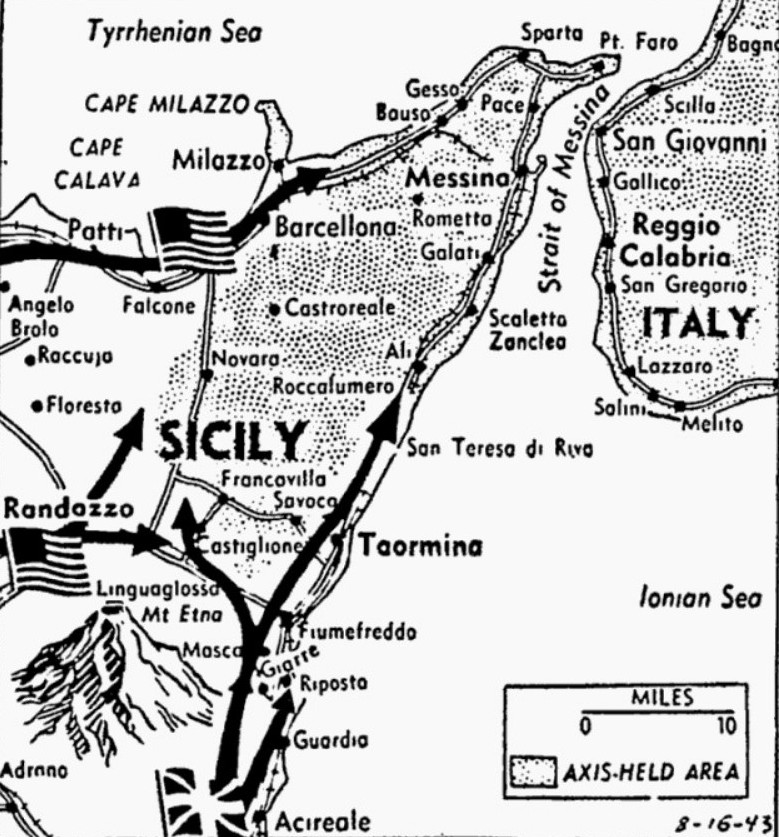Quick victory forecast laid to Churchill
Québec hears report of prediction end will come in 6 months
By John A. Reichmann, United Press staff writer
Québec, Canada –
Prime Minister Winston Churchill was reported without official confirmation today to have predicted the end of the European war within the next six months.
The report was published in the influential French-language newspaper Catholic Action and was understood to have been made before the Québec Cabinet, presumably early last week before Mr. Churchill left for his three-day conference with President Roosevelt at Hyde Park, New York.
The newspaper published the report as a “rumor” but it had also been known confidentially by a number of persons for the last several days.
Heavy blows hinted
The report, if true, would be almost revolutionary for the conservative Mr. Churchill, who has consistently promised his people nothing but “blood, sweat and tears,” and would support previous predictions that tremendous blows are planned against Hitler’s European fortress within the next few weeks.
The newspaper said Mr. Churchill’s statement was made in French and was to the effect the war would be over “d’ici a une demi-douzaine de mois” – or, literally, from now to within six months.
The Prime Minister’s prediction was supposed to have dealt only with Germany and not the war against Japan.
The fate of Rome will be decided by Wednesday, it was believed in Québec Conference circles.
The Chiefs of Staff of the United States and Britain were understood to have decided not to accept the Italian declaration that Rome has been declared an open city, unless Marshal Pietro Badoglio accepts the Allies’ unconditional surrender demand.
May not occupy city
The Allies were said to be considering a decision not to occupy Rome and not to use it for any military purpose.
In such case, the Vatican, the International Red Cross, and possibly Swiss neutral representatives might be invited to form a commission which would guarantee Rome’s neutrality.
However, it was assumed that there will be no final decisions involving political policy for transmission to Badoglio until Prime Minister Winston Churchill and President Roosevelt have made their final review of Italian policy. This, it was assumed, will be one of their first acts when they hold their scheduled meeting here this week.
Plans completed
It was understood that the Anglo-American military plans for Southern Europe and the Eastern Mediterranean have been completed and approved by the general staffs.
The conference, therefore, was expected to concern itself this week almost exclusively with plans for an attack from Britain along the shortest lines to Berlin.
The groups of specialists who have been working 16 hours a day in the Château Frontenac, are understood to have drawn up detailed reports outlining the basic military, naval and air needs for a series of attacks, a number of which would be diversionary sorties extending from the coastal area of Norway to the border between France and Spain.
May aim for Paris
The fundamental objective of the conference was to define where and how soon the greater part of Anglo-American strength now in England and Iceland can be landed across the continent.
There was reason here to believe that Paris will be among the first main objectives.
Prime Minister Winston Churchill was working with his chiefs of staff.
Confer at Hyde Park
Mr. Churchill returned here yesterday and it was revealed by the White House in Washington that he and Mr. Roosevelt had been together for three days at the Roosevelt estate at Hyde Park, New York. Mr. Roosevelt was back in Washington.
It was presumed that the two leaders had preliminary talks at Hyde Park but the presence of Mrs. Roosevelt and Mr. Churchill’s daughter Mary suggested that the social angle had been at least one reason for their meeting there.
Mr. Roosevelt held a series of meetings with top advisers in Washington, in preparation for his conference with Mr. Churchill.
To cover wide field
Weekend developments made clear the wide fields to be covered by the conference. Among them was the definite disclosure that British Foreign Secretary Anthony Eden would be here.
From this, it was concluded that the agenda will roughly be divided into three parts:
-
Military considerations, which will come first and will be secret until they are transmitted into concrete action.
-
Immediate political problems which will be encountered as the armies move into new enemy territory.
-
Long-range political problems likely to be encountered as the Allies try to convert into action the objectives of the Atlantic Charter and related pledges.
Many observers believe that Mr. Eden, or even Mr. Churchill, will proceed to Moscow to discuss what has been done with Soviet Premier Joseph Stalin.
After conferring with Mr. Roosevelt, Secretary of State Cordell Hull said that neither he nor any State Department official planned, at this time, to participate in the Québec Conference.
Standing invitation to Stalin reported
London, England (UP) –
The Sunday Express diplomatic correspondent, commenting on the Russian TASS News Agency statement that Premier Stalin had not been invited to attend the Québec Conference, said President Roosevelt had earlier had invited the Russian war leader to a meeting at any place he might name.
Mr. Roosevelt, the correspondent said, sent Stalin a personal letter by former Ambassador Joseph E. Davis, inviting him to meet the British and American leaders “in the near future at any place Stalin named.”
The Soviet leader cordially and lengthily replied, thanking Mr. Roosevelt for the invitation and saying that while it was not impossible that circumstances might change before long, the military situation at the moment compelled all his attention and presence, the correspondent said.
